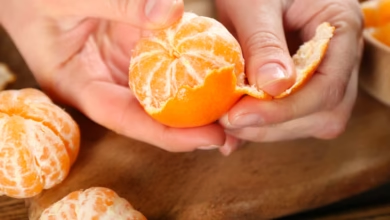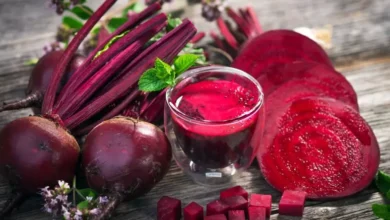How to Read Nutrition Labels: A Beginner’s Guide
When you walk through the grocery store, every package seems to scream “low-fat,” “sugar-free,” or “all natural.” But how do you really know what’s healthy and what’s just clever marketing?
That’s where nutrition labels come in. They give you the facts—if you know how to read them.
For beginners, the information on food labels can be overwhelming. But once you understand the key sections, you’ll feel empowered to make smarter, healthier choices every time you shop.
Let’s break it all down in a simple, easy-to-follow guide.
Why Nutrition Labels Matter
Reading food labels is one of the best tools for taking control of your health. They help you:
- Understand what you’re really eating
- Compare similar products
- Manage your weight and nutrient intake
- Identify added sugars, fats, and sodium
- Make choices that align with your dietary goals
Learning to read labels can make a huge difference in reducing your risk of chronic diseases like diabetes, heart disease, and obesity.
Where to Find Nutrition Labels
In most countries, packaged foods are required to display a Nutrition Facts panel (usually on the back or side of the packaging), along with a list of ingredients.
The design may vary slightly depending on where you live, but the core information is similar: calories, serving size, macronutrients, vitamins, and more.
Understanding the Nutrition Facts Panel
Let’s break down the key components one by one:
1. Serving Size
- Found at the top of the label
- Tells you the amount typically eaten in one sitting
- All the information on the label is based on this amount
Tip: Always check if the package contains more than one serving. A bottle of juice, for example, may have 2–3 servings.
2. Calories
- Indicates how much energy you get per serving
- Useful for managing weight
If you eat more than one serving, you’re getting more calories than listed. Be honest with portion sizes to keep your goals on track.
3. Macronutrients
These include:
- Total fat (look at saturated fat and avoid trans fat)
- Carbohydrates (including fiber and sugars)
- Protein
Focus on high-fiber carbs and adequate protein, and limit saturated fat. Avoid any trans fats entirely if listed.
4. Added Sugars
- A crucial part of the label
- Many processed foods include added sugars (not naturally occurring like in fruit)
- Try to keep daily added sugar intake below 10% of your total calories
Names for added sugars include corn syrup, dextrose, cane sugar, and fructose.
5. Sodium (Salt)
- Important for blood pressure and heart health
- Aim for less than 2,300 mg of sodium per day (or less, if advised by your doctor)
Watch out for processed or canned foods—they often contain high sodium levels.
6. Vitamins and Minerals
- Look for key nutrients like Vitamin D, Calcium, Iron, and Potassium
- Many people don’t get enough of these
- Daily values (DV) help you understand how much a serving contributes to your daily needs
7. % Daily Value (%DV)
- Helps you gauge how much of each nutrient a serving provides
- Based on a 2,000-calorie-per-day diet (adjust if your needs differ)
General rule:
- 5% DV or less = low
- 20% DV or more = high
Use %DV to quickly assess whether a product is high or low in nutrients you care about.
Understanding the Ingredients List
The ingredients list is just as important as the nutrition panel:
- Listed in order by weight (from most to least)
- Shorter lists with recognizable ingredients are generally better
- Avoid products with:
- Artificial additives
- Hydrogenated oils
- High-fructose corn syrup
- Chemical preservatives
If you can’t pronounce it, you might not want to eat it.
Watch Out for These Marketing Tricks
Some products look healthy at first glance but can be misleading. Be cautious with claims like:
- “Natural” – Not always regulated
- “Low-fat” – Often higher in sugar
- “Gluten-free” – Doesn’t always mean healthy
- “Organic” – Doesn’t guarantee low sugar or sodium
Always read the actual label to get the full picture.
Tips for Smarter Label Reading
Here are a few beginner-friendly strategies:
- Compare brands: Some granolas have twice the sugar of others.
- Look beyond the front of the package: The real info is on the back.
- Practice with familiar foods: Start reading labels on your go-to items.
- Don’t be afraid to put something back if it’s not what you expected.
Final Thoughts: Knowledge Is Power
The more you understand nutrition labels, the more confident you’ll feel in the grocery aisle. This simple habit can lead to healthier meals, smarter snacking, and long-term health benefits.
Start by checking just a few products this week. Look at the serving size, added sugars, sodium, and ingredients list. Over time, reading labels will become second nature—and your body will thank you for it.

Hello! My name is Alan Teixeira and I am passionate about helping people live healthier, more balanced lives. From mindful eating to daily habits that promote physical and mental well-being, I believe that small, consistent changes can lead to powerful transformations.
I created this blog to share practical tips, reliable information, and thoughtful insights that can inspire you to take better care of yourself—with balance, mindfulness, and positivity.
If you are looking to improve your health, nourish your body, and build a lighter, more fulfilling routine, you are in the right place. Welcome!





